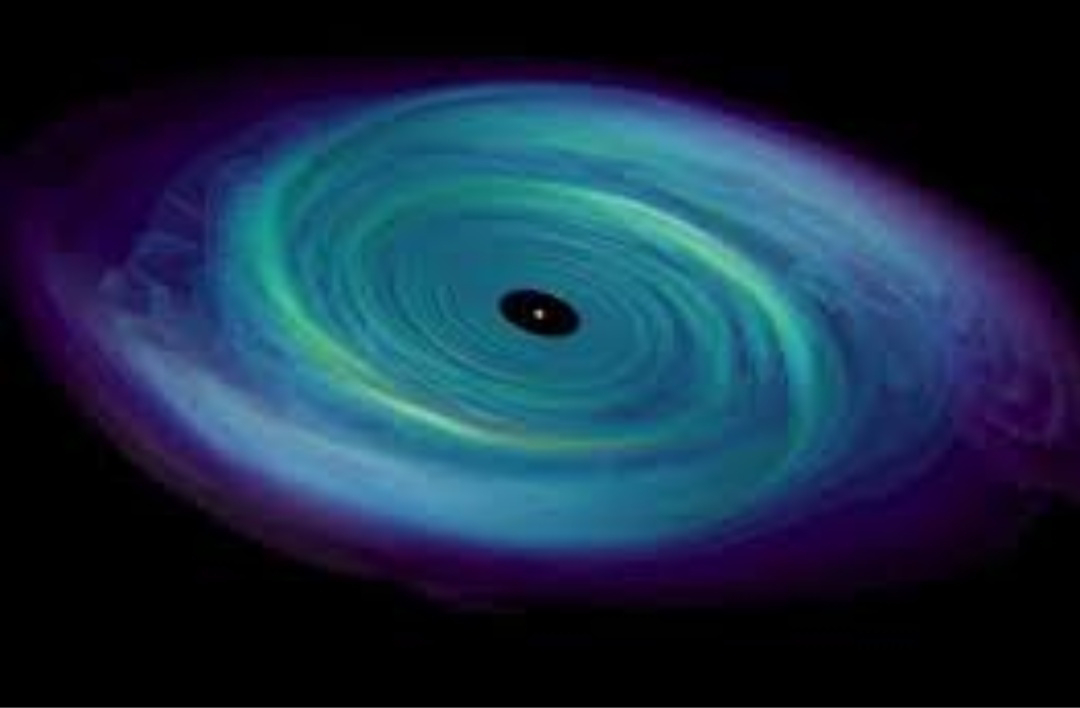An accretion disk is an astronomical term that refers to the rapidly spiraling matter that is in the process of falling into an astronomical object. In principle, any star could have an accretion disk, but in practice, accretion disks are often associated with highly collapsed stars such as black holes or neutron stars.
The matter that serves as the base of the accretion disk can be obtained when a star passes through a region where the interstellar matter is thicker than normal. Normally, however, a star gets an accretion disk from a companion star. When two stars orbit each other, there is an invisible figure eight around the two stars, called the Roche lobes. The Roche lobes represent all the points in space where the gravitational potential from each star is equal. Therefore any matter on the Roche lobes could just as easily fall into either star. If one star in a binary system becomes larger than the Roche lobes, matter will fall from it onto the other star, forming an accretion disk.
The matter falling into a collapsing star hole tends to form a disk because a spherical mass of gas that is spinning will tend to flatten out. The faster it is spinning, the flatter it gets. So, if the falling material is orbiting the central mass, the spinning flattens the matter into an accretion disk.
Black holes are objects that have collapsed to the point that nothing, not even light, can escape the incredible force of their gravity. Because no light can escape, however, there is no way to directly observe it. However, if the black hole has an accretion disk, we can observe the black hole indirectly by observing the accretion disk, which will emit x rays. Without accretion disks there would be little hope of astronomers ever observing black hole.
Accretion disks can also occur with a white dwarf in a binary system. A white dwarf is a collapsed star that is the final stage in the evolution of stars similar to the Sun. White dwarfs contain as much mass as the Sun, compressed to about the size of Earth. Normally the nuclear reactions in a white dwarf have run out of fuel, but the hydrogen from the accretion disk falling onto a white dwarf fuels additional nuclear reactions. White dwarfs have some unusual properties that do not allow them to expand slowly to release the heat pressure generated by these nuclear reactions. This heat pressure therefore builds up until the surface of the whited dwarf explodes. This type of explosion is called a nova (not to be confused with a supernova), and typically releases as much energy in the form of protons in less than a year as the Sun does in 100,000 years.


Comments
Post a Comment